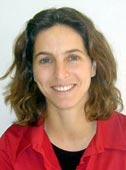Let there be Light: Using Photons in Surgery

Albert Yee
|
University Rounds was an
en-'lightening' experience on
Friday January 7, 2011 at the
McLaughlin Auditorium of
Sunnybrook Health Sciences
Centre. Ben Alman organized
an excellent research session
on lasers in surgery. The audience
was privileged to be hear
an exciting talk by Dr. R.
Dwayne Miller, Director of
the Max Planck Group for
Atomically Resolved Dynamics, Department of Physics,
University of Hamburg, Centre for Free Electron Laser
Science, DESY, and Professor of Chemistry and Physics,
University Professor, University of Toronto. Publishing
regularly in high impact journals such as Nature and
Science, it took him only a few seconds to fully engage
the audience in the future of laser technology. An overview
of the challenges with existing laser devices for use
in surgical applications was provided as well as innovative
new designs pioneered in Dr. Miller's laboratory,
devices that are poised to transform surgical practice.
Extending beyond current laser capabilities will be
significant advances in cutting tissues. Technical capabilities
for biofeedback mechanisms that auto-regulate
a laser's dissection of targeted tissue whilst at the same
time preserving critical adjacent neurovascular tissues are
imminent. The ability of the laser to ablate tissue cell by
cell and characterize its changing composition represents
an enormous opportunity to better define tissue margins
during surgical procedures.
The next generation of surgical lasers promises to
dissect tissues and facilitate better healing of surgical
wounds than the revered surgical scalpel. Preclinical
research conducted by Dr. Miller in collaboration
with the Alman laboratory demonstrated the enhanced
wound healing capabilities of emerging laser devices. The
translation of research discovery to broad adoption into
clinical practice is an interesting discussion and time will
answer the question of whether surgeons will ultimately
prefer a 'light-saber' over the time honored and tested
traditional surgical 'pocket-knife'. Perhaps by then, in
order to match the sensitivity of the laser, robotics will
have replaced or enhanced the skills of the conventional
surgeon. To us, what emerged most strikingly from Dr.
Miller's talk were the challenges to develop support for
such a laser cutting-edge strategy in Canada. We have
witnessed the research 'brain-drain' related to high cost
technology research. Reversal strategies such as the
CIHR research chairs raise hope that the next phases of
this work might be directed from Canada in addition to
international venues.
|

Cari Whyne
|
Albert Yee and Cari Whyne provided a different
approach: the use of lasers for ablating tissues. They provided
an overview of the Photodynamic Therapy (PDT)
and Spine Program highlighting a multi-disciplinary
translational research approach for treatment of vertebral
metastases. This program, consisting of researchers
from University of Toronto (Wilson Laboratory,
Princess Margaret Hospital / University Health Network,
Sunnybrook Holland Musculoskeletal Program and the
Orthopaedic Biomechanics Laboratory, the UT Spine
Program, and the Spine Program at the University
of California, San Francisco),
has focused research efforts on
further developing minimally
invasive spinal surgical strategies
using PDT. The therapy
comprises photo-activation of
a drug within tissues, shows
promise in sparing neural tissue
in areas of the spine in
which bony structures normally
protect neural elements.
Supported by funding from
the Canadian Institute of Health Research, Ontario
Institute for Cancer Research, the former Canadian
Breast Cancer Research Alliance, and Canadian Breast
Cancer Foundation, Drs. Yee and Whyne provided an
overview of the research including development of a
pre-clinical model and of destruction of cancer in the
bony spine and the effect of PDT on bone structure.
This new adjunct to the treatment of vertebral metastasis
must also consider potential interactions between PDT
and standard therapies such as systemic bisphosphonates
and radiation therapy. The PDT approach at using
direct laser light into a targeted vertebra uses techniques
adapted from vertebral osteoplasty.
Cari Whyne provided an overview of the positive
effects of PDT that were observed in bony remodeling
as well as the effect of PDT in healthy and metastatically
involved bone pre-treated with bisphosphonates.
Work conducted to date has translated towards a Phase
I clinical trial on PDT safety that is commencing at the
University of Toronto, supported by funding from the
Canadian Breast Cancer Foundation.
Overall, the year's first University Wide Rounds
sparked much discussion and enthusiasm surrounding
new technology in surgery. Discussion continued well
after the rounds with new ideas and applications for Dr.
Miller's groundbreaking laser technology and photodynamic
therapy, foreshadowing a bright future.
Albert Yee and Cari Whyne
|